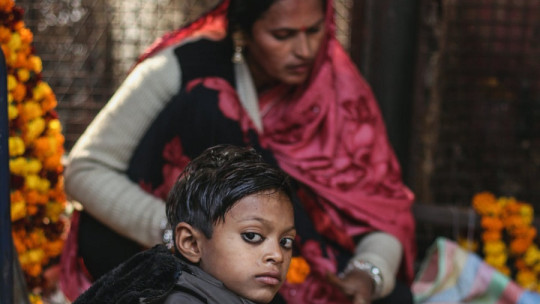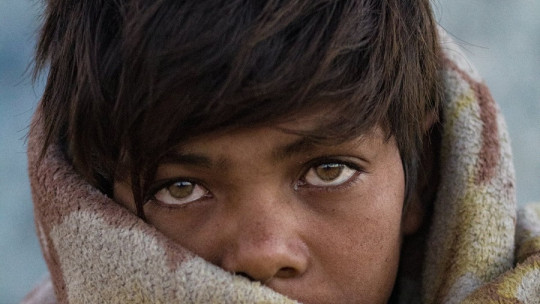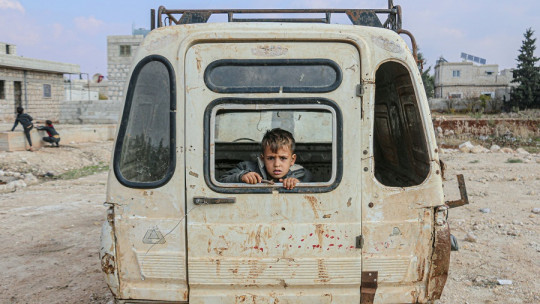
Dehumanization is a complex process that involves the denial or reduction of the humanity of a person or group of people. At its core, it goes beyond a simple lack of empathy or compassion; it actively involves treating individuals as less than human, depriving them of their rights, dignity, and autonomy.
This phenomenon can manifest itself in various ways and in different social, political and cultural contexts. It can arise as a result of deep-rooted prejudices, extreme ideologies, or oppressive systems of power. It is used to justify exploitation, violence, exclusion and marginalization of certain groups of people. It is often based on the perception that certain individuals or communities are inferior, dangerous, or simply do not deserve the same humane treatment as others.
This phenomenon not only affects the direct victims, but also corrodes the morale and integrity of those who participate in its perpetuation. Dehumanization undermines the foundations of justice, equality and human dignity and represents a serious threat to social cohesion and the well-being of humanity as a whole.
It is essential to understand and address dehumanization to build a more just, inclusive and humane world. Thus, in this article we will seek to generate and share knowledge about dehumanization, mainly through the use of examples that help us understand this phenomenon in a more concrete and practical way.
Examples of dehumanization
To better understand the phenomenon of dehumanization, throughout this article, we will propose different examples that reflect this type of attitudes and behaviors that aim to reduce people through their oppression and prevent their strengthening in practically any way. It is important to understand in a more practical way what dehumanization is in order to understand its impact and the situations or environments in which it appears.
1. Slavery
Slavery is one of the most egregious examples of dehumanization in human history. It consists of the practice of treating people as property, denying them their freedom and fundamental rights. For centuries, slavery has been used as a means of economic exploitation and social control, where slaves are considered mere objects without will of their own.
This extreme form of dehumanization has left an indelible mark on history, affecting millions of people of various races, ethnicities, and cultures around the world. The African slave trade to America during the colonial period and transatlantic slavery are especially egregious examples of dehumanization on a massive scale.
Slaves were subjected to inhumane conditions, forced to work long hours under the yoke of violence and coercion. They were denied freedom of expression, education and any form of autonomy over their lives. They were treated as property of their masters, without recognition of their intrinsic humanity.
2. Genocide
Genocide is one of the most extreme forms of dehumanization, characterized by the deliberate and systematic destruction of an ethnic, racial, religious or national group. This atrocity seeks to completely eradicate the identity and presence of the target community, viewing it as less than human and without the right to exist.
Historically, genocide has been perpetrated in various parts of the world with devastating consequences. An emblematic example is the Holocaust during World War II, where six million Jews were murdered by the Nazi regime in an attempted systematic extermination. Other examples include the genocide of Rwandan Tutsi in 1994 and the Armenian genocide of the early 20th century.
Genocide is based on the demonization and dehumanization of the target group, presenting it as an existential threat that must be eliminated. This narrative of hate and exclusion justifies unimaginable acts of violence and cruelty against innocent people.
Despite international efforts to prevent and punish genocide, it remains a reality in the contemporary world. The collective memory of such atrocities serves as a reminder of the destructive capacity of dehumanization and the importance of promoting tolerance, understanding and mutual respect in all societies.
3. Human trafficking
Human trafficking is a modern form of slavery and a contemporary manifestation of dehumanization. It involves the recruiting, transporting, transferring, concealing or receiving people, using methods such as coercion, deception or abuse of power, with the aim of exploiting them.
This phenomenon encompasses various forms of exploitation, such as labor and sexual exploitation, servitude, forced begging, among others. Victims of trafficking are treated as commodities, deprived of their freedom and autonomy, and subjected to degrading living and working conditions.
Dehumanization in human trafficking manifests itself in the objectification of victims, the denial of their basic human rights, and the indifference to their suffering. Human traffickers view their victims as mere objects for financial gain, with no regard for their well-being or dignity.
4. War
Dehumanization in the context of war is a heartbreaking reality that has marked the history of humanity. During armed conflicts, Conflicting groups often resort to dehumanizing the enemy as a tactic to justify violence and inhuman treatment.
In war, the enemy is represented as an existential threat that must be eliminated at any cost. This dehumanizing representation can manifest itself through propaganda, hate speech, and the demonization of an entire ethnic, religious, or national group. Soldiers are trained to view the enemy as less than human, facilitating the perpetration of violent acts and a lack of empathy toward their victims.
Dehumanization in war can also lead to the justification of atrocities such as the killing of civilians, torture, rape, and the indiscriminate destruction of property. War crimes and human rights violations are direct consequences of this dehumanization of the “other.”
5. Racial or ethnic discrimination
Racial or ethnic discrimination is an insidious form of dehumanization that persists in many societies around the world. It manifests itself through the denial of rights, opportunities, and fair treatment based on a person’s race, ethnicity, or skin color. This discrimination not only affects people’s daily lives, but also erodes their self-esteem, dignity and sense of belonging.
Dehumanization in racial or ethnic discrimination is perpetuated through harmful stereotypes, ingrained prejudices, and unjust power structures. People from minority groups are frequently marginalized, stigmatized and excluded from full participation in society due to their ethnic or racial background.
The consequences of this dehumanization are vast and include disparities in access to education, employment, housing, and health care. Additionally, racial or ethnic discrimination can lead to violence, harassment, and systemic injustice against those affected.
6. Sexualization on social networks
Sexualization on social media is a contemporary form of dehumanization that primarily affects women and girls, although it can also impact other groups. It consists of the objectification and objectification of the human body, especially the female, in order to obtain attention, likes, followers or economic benefits on digital platforms.
This dehumanization is manifested through the proliferation of sexualized images that reduce people to mere objects of desire, without taking into account their integrity, dignity or autonomy. Social media can become spaces where the pressure to meet imposed standards of beauty and sexuality is overwhelming leading to damaged self-esteem, anxiety, and other negative mental and emotional health consequences.
Sexualization on social media can also contribute to the normalization of gender-based violence, online sexual harassment, and sexual exploitation. Women and girls are especially vulnerable to these risks, as they are perceived as objects available for the consumption and sexual gratification of others.
7. Social marginalization
Social marginalization is a complex phenomenon that involves the systematic exclusion of certain groups from society, denying them equitable access to resources, opportunities and basic rights. This form of dehumanization is based on the perception that certain individuals or communities are inferior or do not deserve the same humane treatment as others.
This phenomenon can manifest itself in various ways, such as economic discrimination, residential segregation, educational exclusion and social stigmatization. Marginalized groups may include low-income people, people with disabilities, migrants, refugees, ethnic minorities, among others.
Dehumanization in social marginalization is reflected in the lack of empathy and solidarity towards marginalized people, as well as in the justification of policies and practices that perpetuate their exclusion and vulnerability. This situation can lead to loss of self-esteem, hopelessness and alienation for those affected, as well as the perpetuation of intergenerational cycles of poverty and inequality.
Conclusions
Dehumanization, manifested in forms such as slavery, genocide, human trafficking and discrimination, shows the destructive capacity of humanity. These examples illustrate how the denial of human dignity leads to profound injustices and widespread suffering. However, by recognizing and addressing these forms of dehumanization, we can work toward a more just and inclusive society. It is imperative to promote mutual respect, equal rights and solidarity to build a more humane future.








